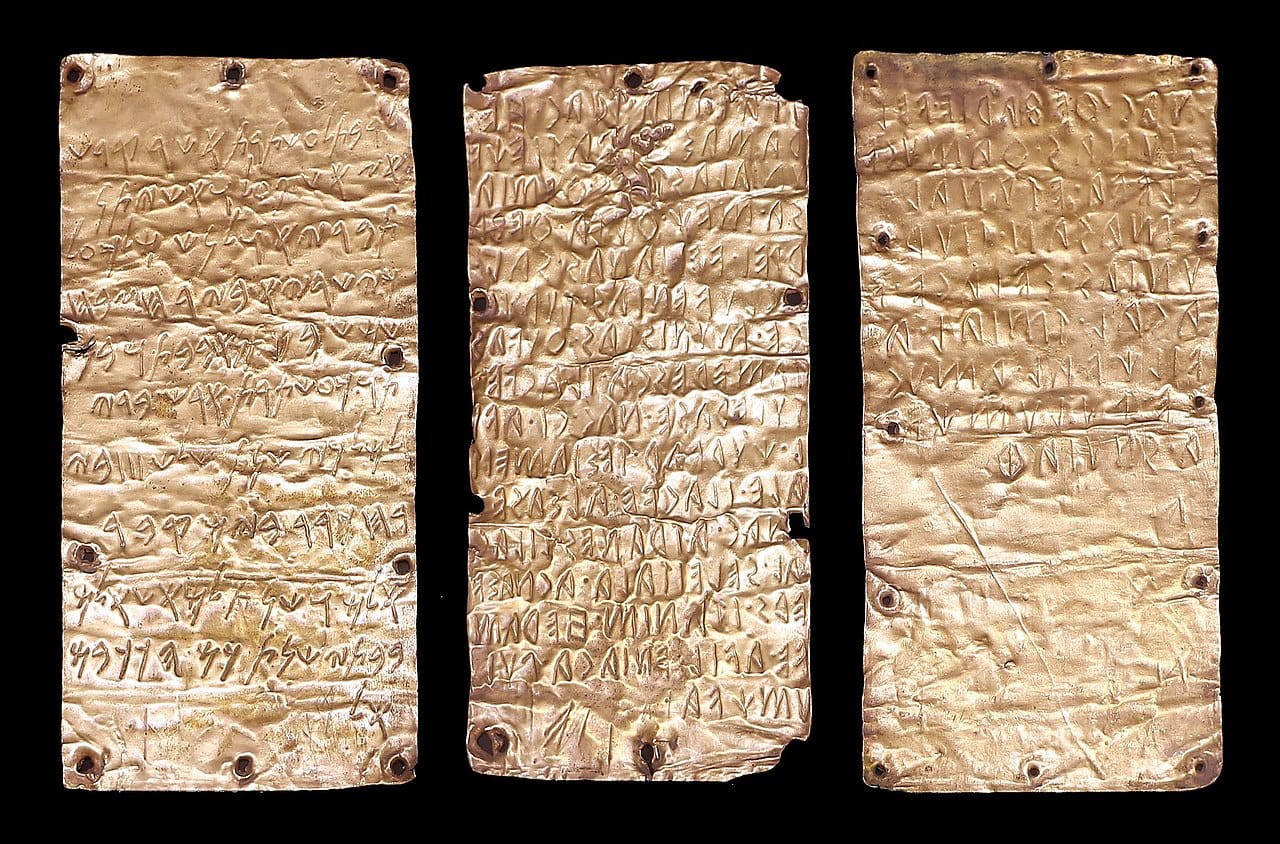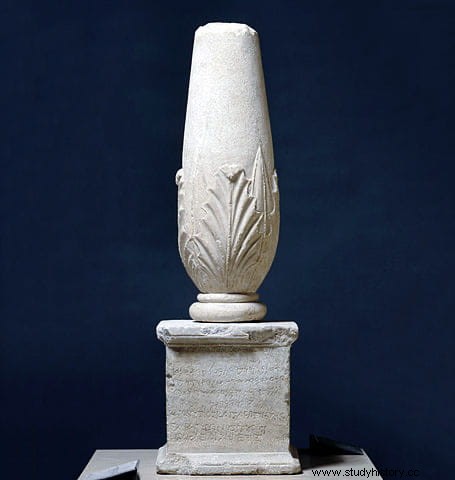Even though the Etruscan language has not been completely deciphered yet, researchers have partial knowledge and understanding, which allows them to read some texts and extract their meaning. This is possible thanks to the Pirgi sheets , three gold plates with a text in Phoenician and two in Etruscan, which have a certain correspondence.
They were found in a sanctuary in Pirgi, the port of the Etruscan city of Caere (today Cerveteri, north of Lazio) on July 8, 1964. Pirgi was one of the most important commercial ports in the Mediterranean between the 6th and 4th centuries BC. , precisely the time in which the plates are dated, around the year 500 BC
They appeared in the excavations of the temple of Astarte, directed by Massimo Pallotino, the creator of the modern concept of Etruscology , in what would be the most important discovery of his career. All three have holes on their edges, which indicates that they could have been united in some way originally, and they measure 20 centimeters high by 10 wide.

Apart from its value as an archaeological object, what is really important is what is written on them. Two texts in Etruscan and one in Phoenician that refer to the consecration of the temple. In the Phoenician text it is mentioned that it is consecrated to the goddess Astarte, while in the Etruscans it is called Uni. And there is more, because the name of the supreme magistrate or king of the city that performs the consecration even appears:Thefarie Velianas .
However, the texts do not correspond completely, they are not an exact translation as if it were the Rosetta stone that allowed deciphering Egyptian hieroglyphs. They have some differences. Thus, the Phoenician text sets out the reasons for the consecration, while one of the Etruscans focuses more on the ceremony itself, and the last one, barely 9 lines long, is a summary of the dedication.
But the researchers were able to use the Phoenician version to unravel and interpret the meaning of the other two texts, for the first time being able to read and understand the mysterious Etruscan language , the decryption of which continues to provide advances and novelties ever since.

Evidently this could only happen thanks to the fact that in 1694 the Melqart Cippi had been discovered in Malta, two pedestals with inscriptions in ancient Greek and Phoenician (Punic), allowing Jean-Jacques Barthelemy to decipher and reconstruct the Carthaginian alphabet. One of them can be seen in the archaeological museum of the Maltese capital, while the other is in the Louvre.
Even today the plates of Pirgi are considered the oldest historical source of pre-Roman Italy and of a language, Etruscan, whose inhabitants already occupied the area of present-day Tuscany before the Indo-European migration. The last person known for sure who could read Etruscan was Emperor Claudius, who compiled a sadly lost dictionary by interviewing the last peasants who spoke it. In the absence of that dictionary, today most of the known Etruscan inscriptions are collected in the Corpus Inscriptionum Etruscarum.
Historically, they are a document that highlights the close relationship between Etruria and Carthage (founded by Phoenicians), possibly allies in the face of Greek expansion in the western Mediterranean.
Currently the plates of Pyrgi can be seen in the National Etruscan Museum in Rome.
